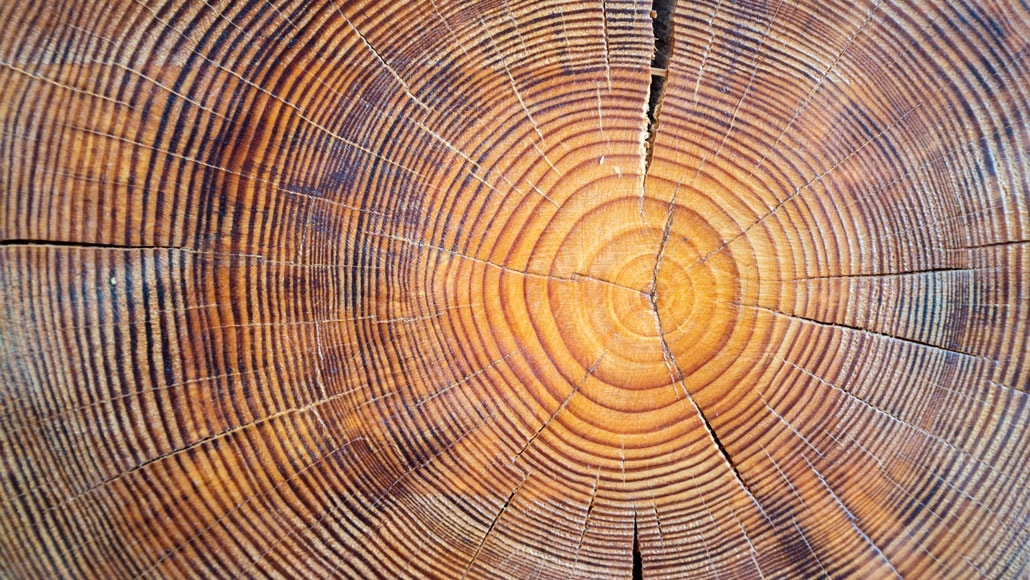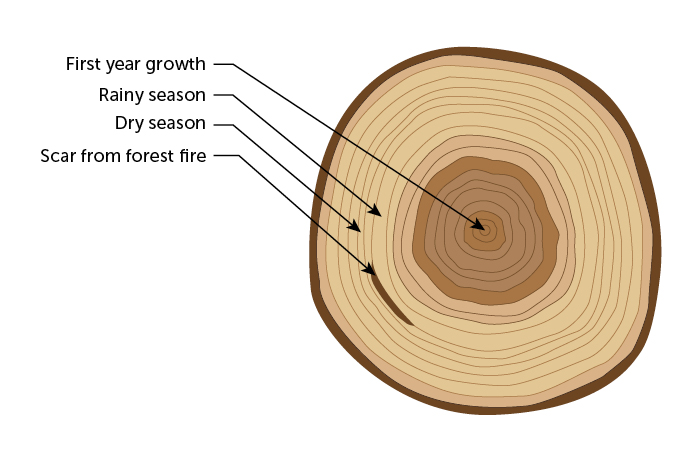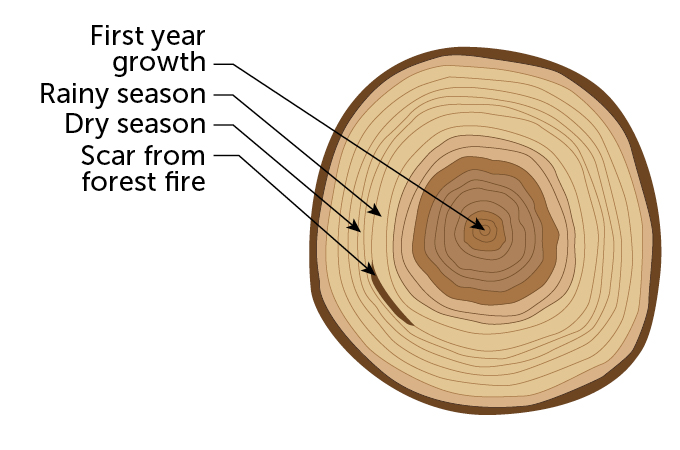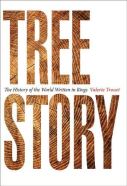
Every tree has a unique pattern of tree rings, and studying these patterns can help scientists learn about past climates and ancient civilizations.
Ja'Crispy/iStock/Getty Images Plus
- More than 2 years ago
Tree Story
Valerie Trouet
Johns Hopkins Univ., $27
Once you look at trees through the eyes of a dendrochronologist, you never quite see the leafy wonders the same way again. Peel away the hard, rough bark and there is a living document, history recorded in rings of wood cells. Each tree ring pattern of growth is unique, as the width of a ring depends on how much water was available that year. By comparing and compiling databases of these “fingerprints” from many different trees in many different parts of the world, scientists can peer into past climates, past ecosystems and even past civilizations.
Humans’ and trees’ histories have long been intertwined. In her new book Tree Story, tree ring researcher Valerie Trouet examines this shared past as she describes the curious, convoluted history of dendrochronology. It’s a field that was born a little over a century ago, almost as a hobby for an astronomer at the University of Arizona.
Andrew Douglass was interested in tree rings for what they might tell him about how past solar cycles influenced Earth’s climate. He began amassing a tree ring collection dating back to the mid-15th century. Then Douglass began examining an even older source of data: ancient wooden beams from Puebloan ruins in the U.S. Southwest. By linking the patterns in the beams to his own tree ring samples, he created a long chronological history for the region — and so the science of dendrochronology was born. Through this new dating technique, Douglass also solved a long-standing mystery, calculating ages for the different Puebloan sites ranging from the 10th to the 14th century.
Trees rings have documented other pivotal moments in human history, Trouet explains. Unusually wet years from 1211 to 1225 may have given a boost to grasses in central Asia’s steppe — fodder for Genghis Khan’s mounted forces and key to the rapid expansion of the Mongol Empire. The 1986 Chernobyl nuclear power plant accident left its mark in the strangely aligned wood cells of surviving pine trees. Wood patterns in a violin crafted by Antonio Stradivari (and worth an estimated $20 million) authenticated not only the violin’s age but its geographic origins.
Tree ring data spanning over 1,000 years was also instrumental in helping scientists reconstruct the planet’s recent climate history and in highlighting the dramatic warming observed in the last century.


Trouet, a member of the University of Arizona’s Laboratory of Tree-Ring Research in Tucson, is a dendroclimatologist; she uses tree rings to study Earth’s past climate. She tells of “the thrill of the chase” to find the oldest, least disturbed trees on Earth, with circular rings and growth related only to changes in climate. These trees have helped her identify, for example, periods of medieval drought in northern Africa that are linked to a large-scale weather pattern known as the North Atlantic Oscillation — also the probable reason for a historically documented period of warmth in Europe known as the Medieval Climate Anomaly, she suggests.
Now, she and colleagues are examining tree rings from Europe to trace how the high-speed jet stream winds that encircle the Northern Hemisphere have shifted over time. The waviness of the jet stream — how far south these winds might dip and curl — is linked to patterns of storms across the northern latitudes. Understanding those links in the past, Trouet argues, could provide clues to how storminess may change in the future, as the planet’s climate changes.
Sign up for our newsletter
We summarize the week's scientific breakthroughs every Thursday.
Tree Story gives readers a lively, sometimes visceral feel for Trouet’s work. She describes the beauty of tiny wood cells smaller in diameter than a human hair, and the elbow grease involved in manually twisting a borer into the heart of a tree to retrieve a sample. “This requires quite a bit of upper-body strength, especially if you’re coring dozens of trees a day, and this often comes as a surprise to dendro newbies.” Trouet’s humor also comes through when she describes how fieldwork is sometimes driven by testosterone–fueled stubbornness, and how she has had to convince male colleagues hunting for trees in the mountains that it’s OK to admit to being tired, hungry or cold. “As a woman scientist, I got 99 problems, but at least starving or freezing to death to protect my ego ain’t one.”
Peppered throughout the book are italicized terms and helpful definitions of scientific jargon such as “crossdating” (matching ring patterns among different trees, whether alive or dead, to create a consistent chronology). I particularly enjoyed getting a glimpse into odd tree ring lingo: To “hit the pith” is to core all the way to the oldest part of a tree; “cookies” are the round cross sections of a fallen trunk, cut with a chainsaw or an ax.
Trouet loves trees, but she says she is not a tree-hugger, nor does she believe trees are sentient. Instead, she is drawn to unlocking the secrets the trees contain. “Wood is gorgeous,” she writes. “And finding matching tree ring patterns is like solving a puzzle — it is addictive.”
Buy Tree Story from Amazon.com. Science News is a participant in the Amazon Services LLC Associates Program. Please see our FAQ for more details.








